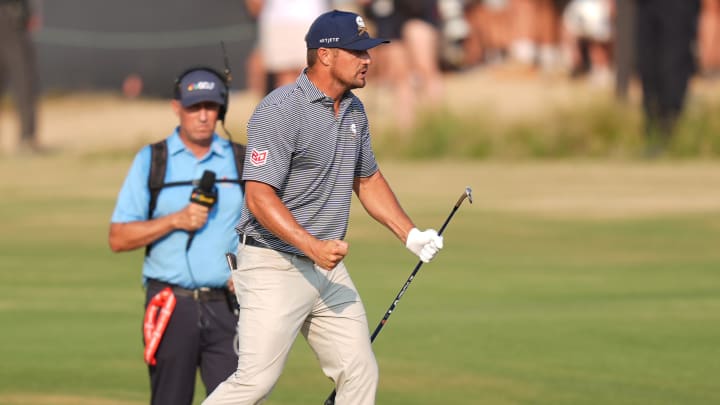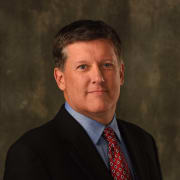Bryson DeChambeau Goes Deep on Final-Hole Bunker Shot That Won the U.S. Open

It was pointed out to Bryson DeChambeau on Wednesday that in a LIV Golf survey question he answered earlier this year, he said the 60-yard bunker shot was the one that gives him the most difficulty.
DeChambeau executed a 55-yard shot to near perfection Sunday, setting up the winning par putt at the U.S. Open on the 18th hole at Pinehurst No. 2.
“The best I can say is I practiced as a junior kid, just a little kid out there going and hitting balls in the weirdest places up in trees and bushes,” DeChambeau said at the LIV Golf Nashville event, where he is playing this week. “I remember Tiger (Woods) talking about that, how he'd just go place golf balls in random places, and I wanted to be like Tiger. What did I do? I went and threw golf balls in dirt and bad lies and bad bunker lies and long bunker shots, and I tried to do everything and anything to get that golf ball in the hole.
“As much as I am a very mechanical, methodical person, there is an artistry to me that not too many people know but I hope they are starting to see, and that 60-yard bunker shot, whatever it was, when I got up there, the one thing that gave me a lot of comfort was G-Bo (caddie Greg Bodine) telling me, 'Bryson, I've seen you hit way more difficult shots than this. You've got this.’ I stepped in there and executed it.
“I wanted a tap-in, but it got up to 4 feet, and I was ready to go nuts, and you could see me kind of get after it with G-Bo saying, 'let's go.' That was so big. But I knew I had a 4-footer to make. It wasn't just a tap-in.
“The 60-yard bunker shot, that was a good call, and for it to all come together like that is, I guess, some could say fate.”
It’s been a hectic few days since his victory for DeChambeau, who estimated getting about 12 hours of sleep during that time period.
He arrived in Nashville on Tuesday after making the rounds in New York, including spots with Jimmy Kimmell, the Today show, Pat McAfee and CNBC.
“I'm humbled, very humbled by it,” DeChambeau said. “When I was younger, I felt like I was called to do something in the game, and getting to this point in my life where I had struggled, I've done some things I shouldn't have done, said some things I shouldn't have said and messing up and learning from those mistakes and learning patience, resilience, determination, continuing to grow in that capacity and then getting to a place where I finally get to showcase my true self and show others what this great game means to me, it's given me so much. It's time for me to give back.
“That's what I love most. That's why this was so important for everyone to touch the trophy. I wanted everybody to experience it because it wasn't just for me, it was for the turnaround, everyone looking at me going, wow, that person is different than what I thought. It was for them, those people that saw who I now am, who I am. That's what I wanted people to feel is that involvement, that appreciation from me saying thank you. It meant a lot.”
DeChambeau then went on to explain the difficulty of that final-hole bunker shot.
“From a technicality standpoint, you can't miss it a millimeter behind the ball or a millimeter too close to the ball,’’ he said. “From 60 yards with an open face, it's an explosion shot, and if you catch it just a little thin, I'm hitting it into that clubhouse. There is no room for error. Very, very little room for error. For it to even go that far out of a bunker takes a pretty darned good amount of strength.
“If I chunked it, too, it's short, hits the front edge and comes right back down. Now I'm trying to get up-and-down just to get into a playoff.
“The difficulty was through the roof, and it's something that I never wish anyone to have, to have that experience. But in a U.S. Open, the toughest test in golf, you get presented that, you've just got to go full force into it and just embrace it and say, look, this is what the game of golf has given me, I've practiced this before. You've just got to execute it.
“I knew how precise I needed to be. I remember looking down at the bunker and seeing just a small sliver of shiny sand about an inch and a half behind the ball, and I was like, just go right through that area, and that's all I thought of.”
